
Perennial Forbs Around Las Vegas, Vegetation Around Las Vegas
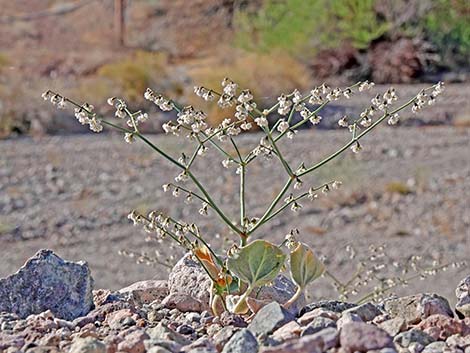 Skeletonweed in flower; flowers mostly hang down from stems |
General: Skeletonweed (Eriogonum deflexum), also called Flattop Buckwheat, is a perennial forb with a small basal rosette of thick, dark green leaves, usually a single erect main stem to about 18-inches tall, and many terminal branches. The terminal branchlets are thin and wispy. Flowers hang from the terminal branchlets. This species is similar to Desert Trumpet, except that the stems are not inflated. Stems not inflated. Flowers hang down. Three triangular bracts at branching points. Leaf with dense white wool on underside. Leaves on petioles, dull green, rounded (heart-shaped, 3 curving veins). Skeletonweed is a common component of vegetation communities in dry, well-drained sandy and gravelly areas on desert flats, bajadas, and moderate slopes in the lower mountains in the Lower Sonoran (Creosote-Bursage Flats) and Upper Sonoran (Mojave Desert Scrub and Pinyon-Juniper Woodland) life zones. Family: Buckwheat (Polygonaceae). Other Names: Eriogonum inflatus deflatum, Flattop Buckwheat. |
 Dried Skeletonweed during winter |
Plant Form: Biannual forb. In the first year, only a basal rosette of leaves; in the second year, plant produces a single main stem with many terminal branches and many tiny flowers. Height: Flowering stalk usually about 2 feet; to 5-feet tall. Stems: Not inflated below nodes; contrast with Desert Trumpet. Three triangular bracts at branching points Leaves: Basal rosette: blades to about 2-inches long, oblong, somewhat hairy above, coarsely hairy below. Flowers: Inflorescence: many slender branches. Flowers tiny, oblong, 1-3 mm, white to reddish; hang from terminal stems. Seeds: Achene; small (2 mm). |
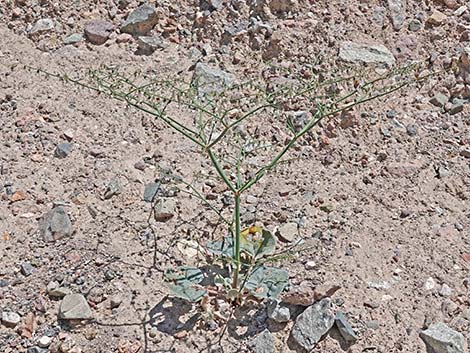 Sometimes hard to see |
Habitat: Dry, well-drained sandy and gravelly on desert flats, bajadas, and moderate slopes in the lower mountains. Elevation: To about 3,500 feet. Distribution: California to western Arizona, and south into northwestern Mexico. Comments: Eriogonum is a large genus with many species that are hard to identify. |
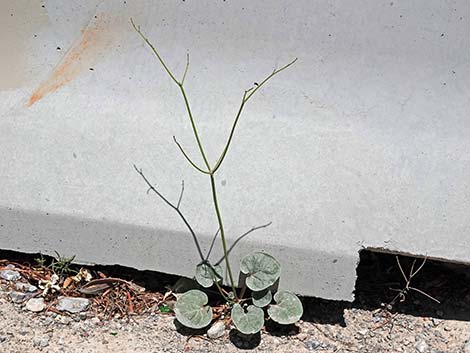 Skeletonweed; young plant without flowers |
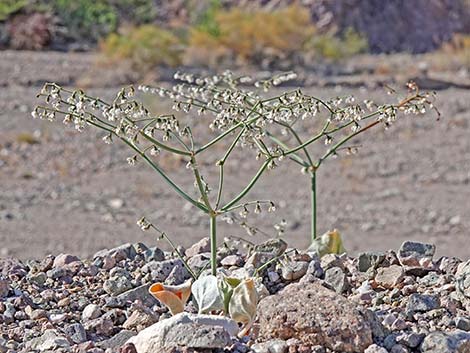 Skeletonweed in flower |
 Basal leaves |
 Basal leaves |
 Basal leaf, upper surface: leaves thickened |
 Basal leaf, lower surface: leaves thickened |
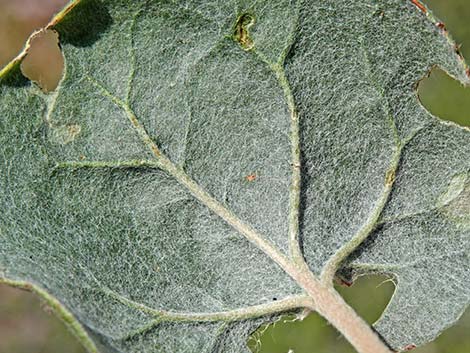 Basal leaf, lower surface |
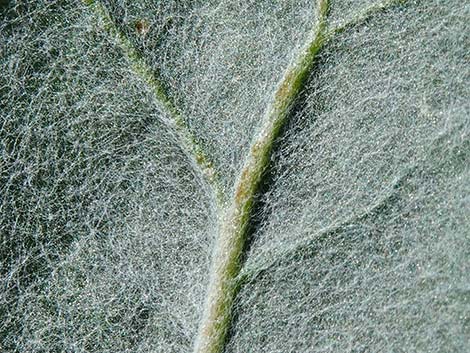 Basal leaf, lower surface: very woolly |
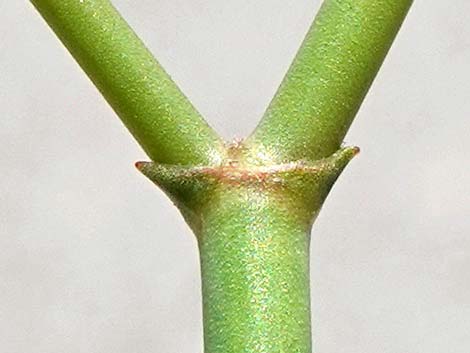 Three triangular bracts at branching nodes (two visible in this view) |
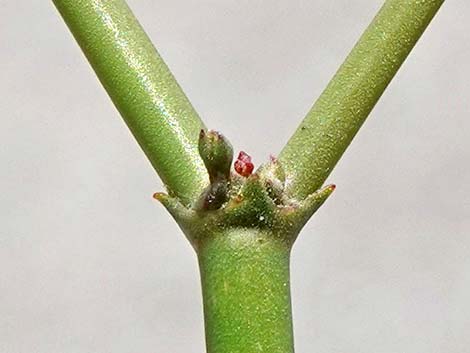 Three triangular bracts at branching nodes (all three visible in this view) |
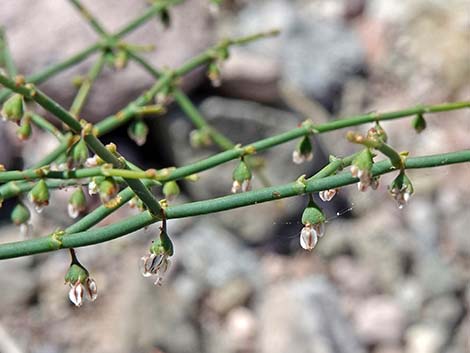 Flowers hang down from terminal branches |
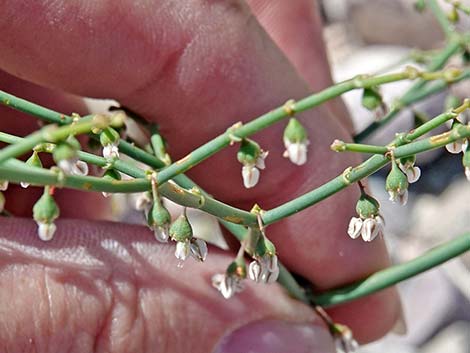 Flowers hang down from terminal branches |
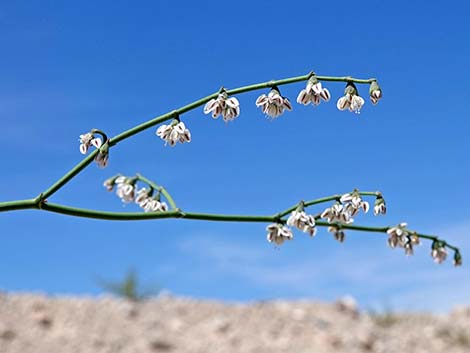 Flowers hang down from terminal branches |
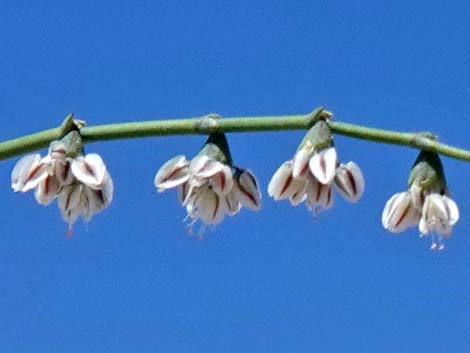 Flowers hang down from terminal branches |
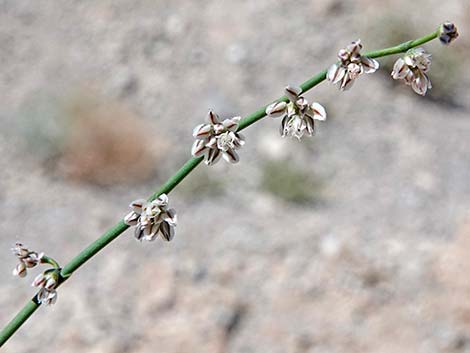 |
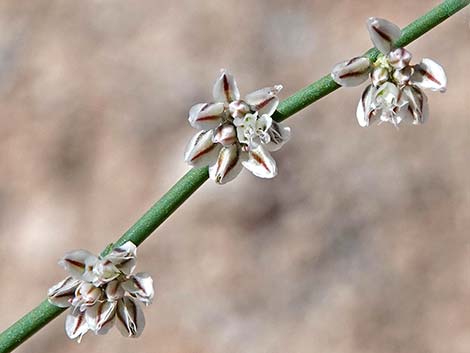 |
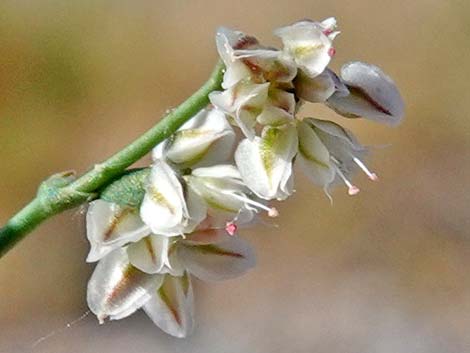 |
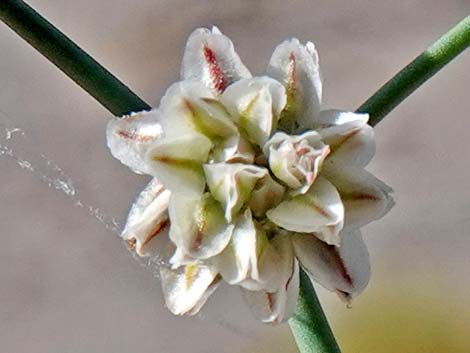 |
 Entire plant during winter |
 Occasionally multiple stems are seen |
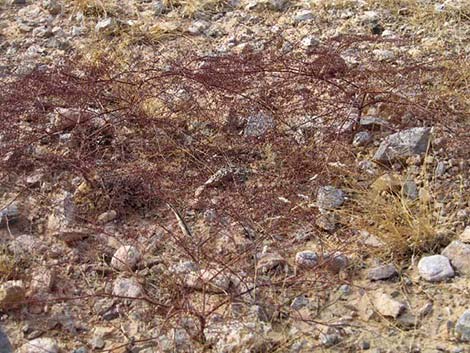 These plants can cover the landscape |
 Dried flowers |
Note: All distances, elevations, and other facts are approximate. Names generally follow the USDA database.
![]() ; Last updated 240621
; Last updated 240621
| All Perennial Forbs | Plant Species Index | Glossary | Copyright, Conditions, Disclaimer | Home |